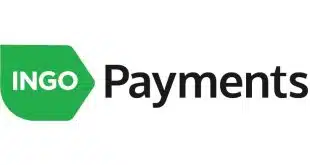While many bankers and even technologists may regard handset-based electronic deposits as esoteric, consumers seem not only familiar with the product but favorably inclined toward it, according to a survey by Mercatus LLC, a Boston-based consulting firm that follows mobile banking and payments. The survey, conducted in December among more than 2,100 U.S. consumers, found that 59% who use mobile banking would be likely to use remote deposit capture via a mobile phone if it were offered by their banks. Among age groups considered most attractive financial-services firms, 66% of those age 26 to 34 and 69% of those 35 to 44 indicated a likelihood of adoption. Even among consumers not using mobile banking, 35% of those in the 18-to-34 age group and a quarter of those in the 35-to-44 group said they'd likely use their handsets to make deposits. The results are startling, considering that only a small handful of banks offer the service, which allows consumers to use their mobile phones to send images of checks to their banks for processing through Check 21 rules. Even remote capture using conventional check scanners at small businesses is still considered an emerging technology, though it has proven popular with many merchants and professional offices. “At first blush, we were surprised consumers are so ready to adopt mobile [remote deposit capture],” says Robert B. Hedges, managing partner at Mercatus. “We're living in world where bankers are worrying whether it will work. Consumers are just way out ahead of the industry in realizing the utility of this application.” What appeals most to consumers, according to the survey, is convenience and ease of use (cited by 52%) and faster funds availability (45%). Convenience, says Hedges, seems paramount with this as with many other mobile-banking applications. “I don't have to get in my car and drive to the bank on Saturday morning [to make a deposit],” he says. “I can just sit at my kitchen table and do it.” With mobile RDC, a special application on the phone allows a consumer to use his phone's camera to snap photos of the front and back of a check, then send the images to his bank. The survey also reveals an opportunity for financial institutions that introduce mobile remote capture to attract consumers?and their deposits?from competitors. “There's a window of nine to 24 months where if you deploy and promote it, you're going to win business,” Hedges says. “There will be a real advantage to first movers. Over time, it'll become table stakes.” Indeed, based on the survey's finding that those mobile-banking customers likely to adopt mobile RDC account for 30% of consumer deposit volume at branches, Mercatus projects that the technology will displace 100 million checks in branches, in the mail, and at ATMs this year, a number it forecasts will balloon to 1.5 billion in 2014. But, while banks could reap operational savings from mobile RDC, they're not likely to enjoy much fee income. Consumers, Hedges says, will resist fees just as they do for online bill payment. “It's a decisive way to gain share, but consumers will not view it as reasonable to charge for it,” he says. “It'll be like the evolution of online banking.” About five financial institutions have so far introduced a mobile remote capture product, Mercatus says. The most prominent, and probably the most successful, of these so far is USAA, a diversified insurance and banking company with a single office in San Antonio, Texas that serves retired and active-duty military personnel and their families. USAA announced late in January that its mobile-deposit service for the Apple iPhone had garnered $300 million in deposits since the service's introduction in August. The company also extended the product to include handsets running Google Inc.'s Android operating system. Also, last summer bank processor Fiserv Inc. reached an agreement with Mitek Inc., a San Diego-based technology company, to pilot Mitek's mobile RDC software with client banks (Digital Transactions News, July 29, 2009). Mobile remote capture tends to appeal primarily to financial-services companies without extensive branch networks. Credit unions and other such companies can use the technology to gather deposits in the absence of branches, experts say.
Check Also
QorPay Adds Services From Visa’s Cybersource to Its Payments Menu
QorPay Inc. reported Thursday that it has integrated its payment technology with Visa Inc.’s Cybersource …







